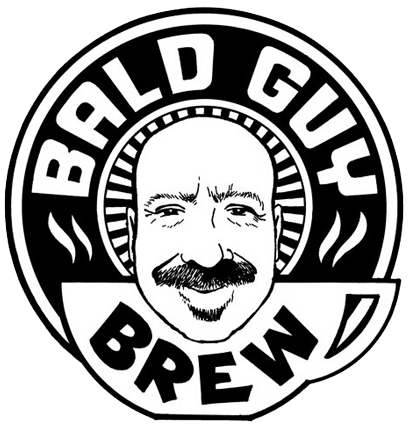Coffee Cupping 101
Posted on June 10 2020,

I like to think of my morning ritual of drinking coffee as a trip through a travel magazine…I’m excited and curious to explore the depth and complexity of the cup. I do this by breaking down my experience into two categories: what I smell and what I taste.
In the fragrance and aroma of the coffee, I am using my olfactory in the nasal passage to gather information of what is happening in the cup. When I drink it, the process of understanding what I just smelled is now being processed through the sensations on my tongue: sweetness, acidity, etc.
The goal is to appreciate the hard work of the Producer who meticulously cared for his crop…and I want you to have the same experience with your morning ritual. In order to develop a common language about coffee, take a minute to read over the following definitions before I explain how sensory evaluation works!
Coffee Cupping
The process by which professional tasters evaluate the coffee by identifying and grading key attributes of the cup. Also known as Sensory Evaluation, a taster will use sight, taste, touch (mouthfeel), and smell to grade the following categories: Fragrance, Aroma, Flavor, Finish, Body, Acidity, Balance, Sweetness, Uniformity, and if it is a clean cup-no defects.
Olfactory
Lecia Bushak, a guest contributor at Medical Daily writes: "Inside your nasal passage, air molecules land on the olfactory epithelium…a tissue covered in mucus that lines the inside of the nasal cavity. Millions of receptors or neurons are capable of binding with specific odor molecules. An odor molecule from a cup of coffee drifting up into your nose will find and bind to an olfactory receptor that’s specifically designed to identify that molecule".
Sample Roast
The main function of sample roasting is consistency. The goal is to develop coffees to the same level whereby the coffee’s potential can be identified without obscuring the good or the bad qualities.
Acidity
Acidity can provide an apple or pear-like flavor to the coffee, sweet and crisp, giving the coffee “bounce" or "liveliness" in the cup. While cupping a "Honeyed Processed" Colombian coffee this week at our lab with Producer/Exporter - Herbert Peñaloza from 575 Cafe, I was struck with the beauty of the Malic acid (think pressed apple cider…crisp, sweet, and tangy) present in the cup. Yes, I bought all of it!
Balance
The harmonious mix of great music is the easiest way to describe the “balance” of the complex tastes in coffee. Is one aspect of the coffee “too loud”? Or does everything blend and play together nicely? An illustration of this is our Costa Rican coffee which displayed superb balance during a recent cupping.
Flavor
The coffee’s origin, how it was processed, roast level, and extraction method all effect flavor. This includes descriptors like cacao, honey, basmati rice, but it is also about the “richness" and “range" of flavors in the cup. While cupping a pre-buy sample of our Guatemalan, the “richness” of flavor was deeply satisfying and left me wanting to know more about the cup.
Sweetness
This is a very desirable trait that is a result of the roasting process as well as the coffee terroir (think wine). High altitude coffees generally have a higher level of sweetness due to the increase of sucrose during the maturation process of the cherry. A fellow roaster, whom I sent a sample of our Ethiopian Natural for evaluation, was impressed with the “sugar cane” sweetness present in the cup due to the terroir and processing.
Finish
Finish is the immediate sensation after the coffee is swallowed or spit out. The finish can develop as the cup cools and can be described as faint, lingering, clean, or dirty. A classic example of a coffee with a developing finish is from the Island of Sumatra, which softens from pungent to cacao with a light spice as the cup cools.
Mouthfeel
This is the tactile weight of the coffee on your tongue. Does the coffee have a light, tea-like mouthfeel, or is it more of a rich, creamy, heavy cup?
Now, let’s look at the coffee cupping process.
The coffee industry uses a standardized practice called coffee cupping to evaluate coffee. The idea behind the coffee cupping process is to avoid any flavor impact that might occur during the brewing and roasting process. A fixed amount of coffee is weighed and put into a cupping bowl. After applying hot water to the coffee, it is left alone to steep for four minutes.
After the allotted time, the “crust” which has formed is “broken” or stirred lightly to release the gases of the coffee. Once it is has reached a safe temperature, a “cupping spoon” (think bullion spoon) is dipped into the liquid and “slurped” or “atomized” or “sprayed” to distribute the liquid from the front of the mouth to the back, and across the tongue. The process will be repeated at least three times.
With each pass I focus on a different aspect of the coffee. While it is still hot, I am focusing on the Flavor and Aftertaste. With the second pass after I let it cool a wee bit, I take time to evaluate the Acidity, Body, and Balance. In the final pass, when the cup is cool, I look for Uniformity, Sweetness, and any Defects that might be present.
Coffee tasters follow this routine religiously, and it is only by cupping regularly that you train the palette to identify what is happening in your morning cup. Few people really concentrate on tasting the coffee they drink. When you take time to focus on what's in your cup, you will begin to notice the subtitles of Specialty Coffee.

